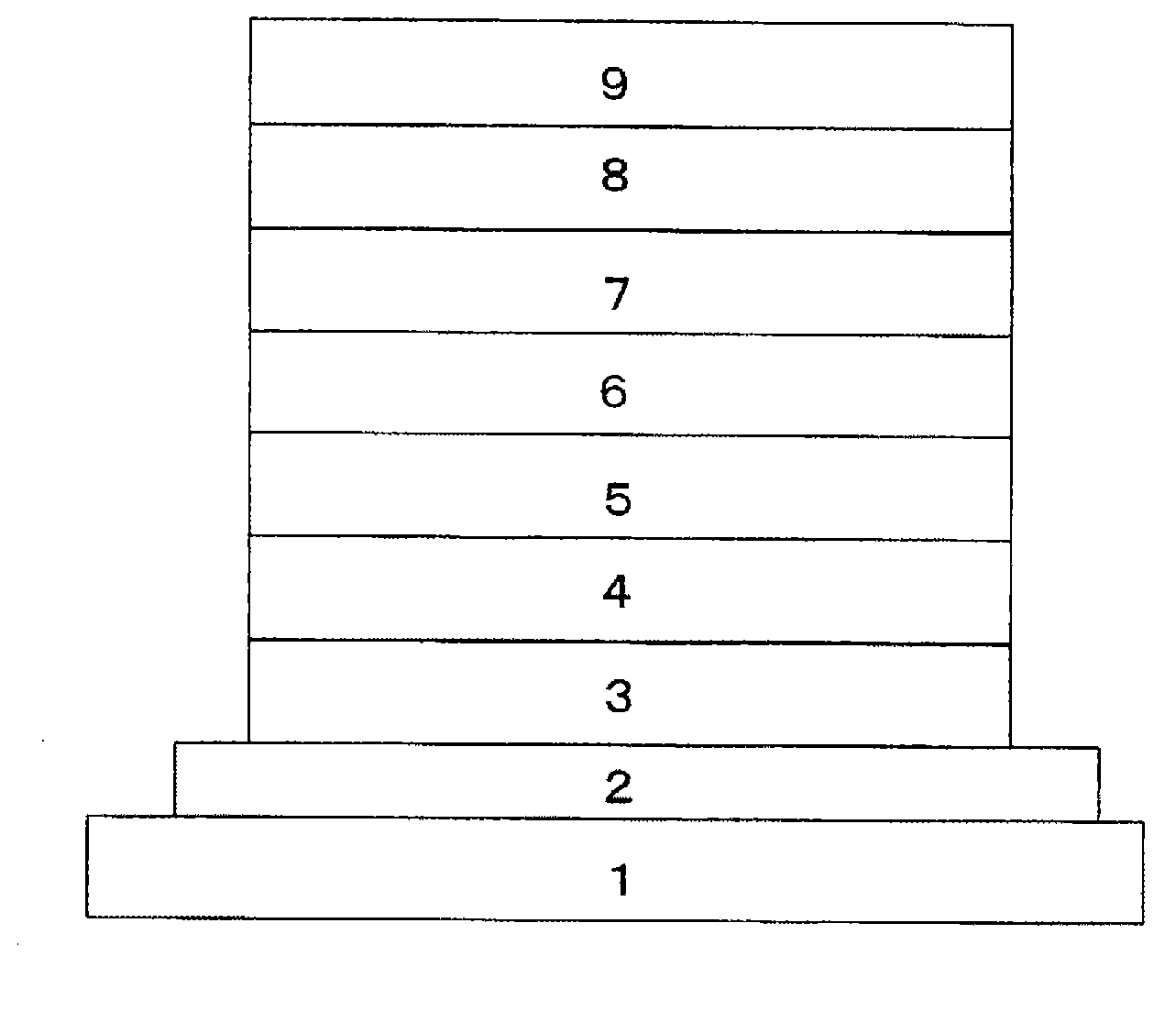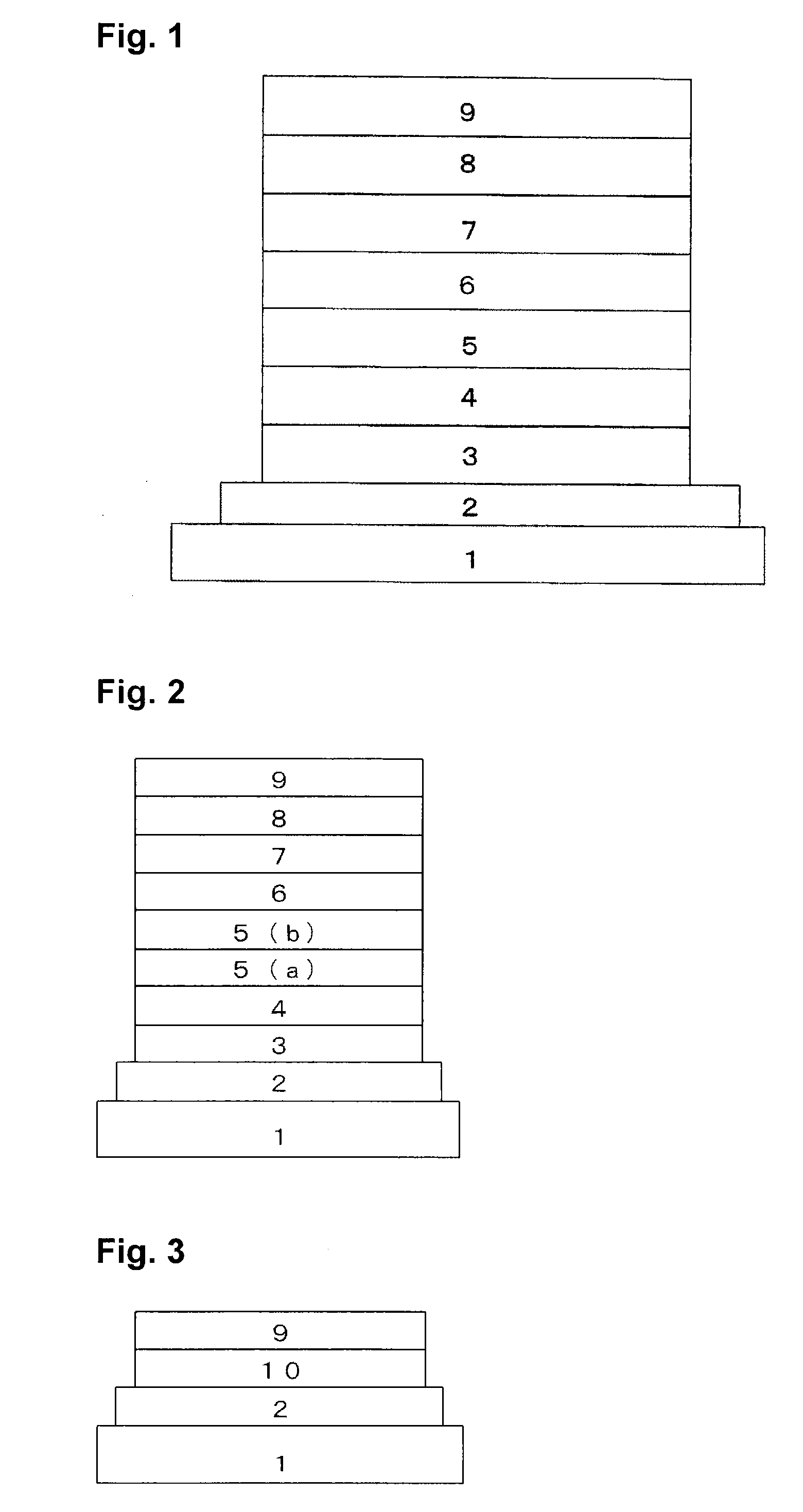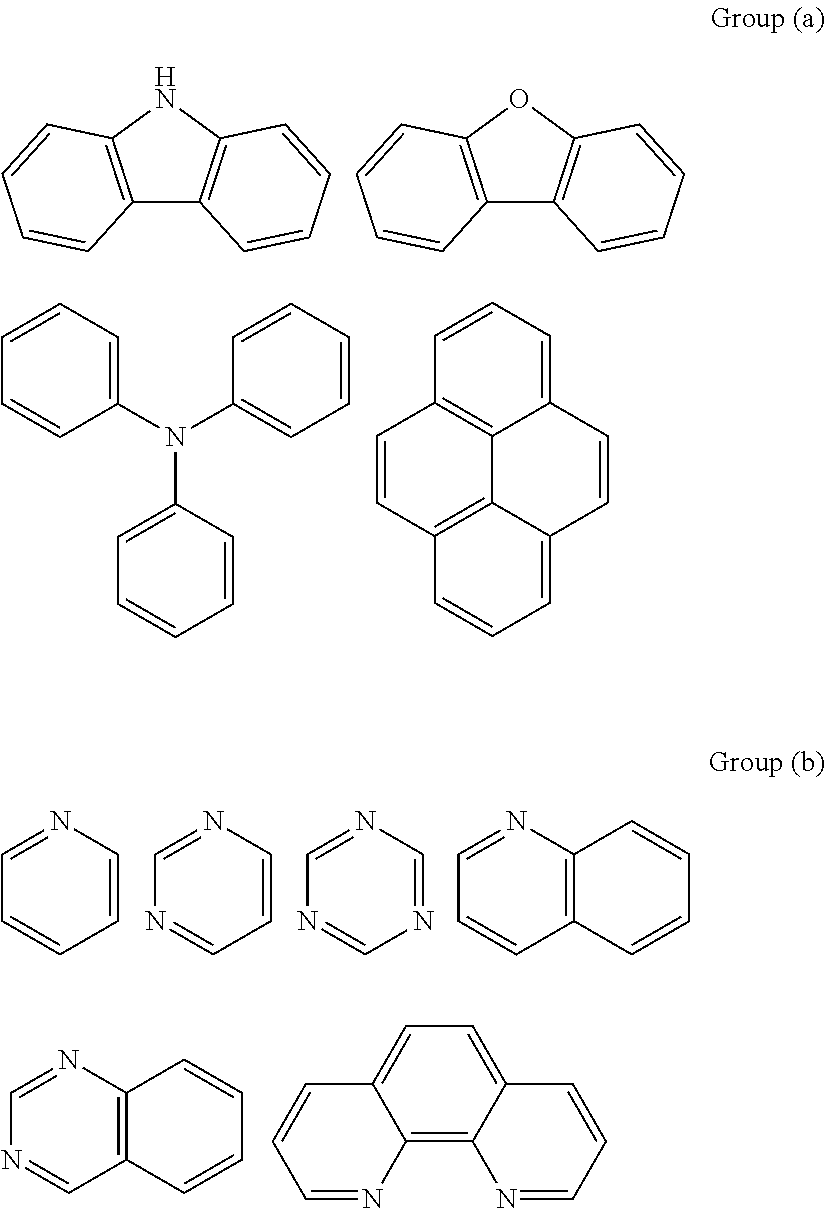Organic el element and organic light-emitting device
- Summary
- Abstract
- Description
- Claims
- Application Information
AI Technical Summary
Benefits of technology
Problems solved by technology
Method used
Image
Examples
reference example 1
[0287]An organic EL element having the structure shown in FIG. 1 was prepared by the following method.
(Preparation of ITO Substrate)
[0288]An indium.tin oxide (ITO) transparent conductive film deposited in a thickness of 150 nm on a glass substrate 1 (a sputter-deposited product, sheet resistance: 15Ω) was subjected to patterning in stripes with a width of 2 mm by means of a usual photolithography technique and hydrochloric acid etching to form an anode 2.
(Pre-Treatment)
[0289]The substrate having the anode patterned as described above (ITO substrate) was subjected to cleaning in the order of ultrasonic cleaning by a surfactant, water washing by pure water and ultrasonic cleaning by isopropyl alcohol, then dried by compressed air and finally subjected to ultraviolet ray ozone cleaning for 1 minute.
(Film Formation of Hole Injection Layer)
[0290]Then, a hole injection layer 3 was formed by a wet film-forming method as follows. As the material for the hole injection layer 3, a composition...
reference example 2
[0303]An organic EL element was prepared in the same manner as in Reference Example 1 except that in Reference Example 1, the hole-relaxing material HA-1 was changed to the following BAlq as a hole-blocking material.
reference example 3
[0304]An organic EL element was prepared in the same manner as in Reference Example 1 except that in Reference Example 1, the hole-relaxing material HA-1 was changed to the following HB-1 as a hole-blocking material.
[Results]
[0305]With respect to the organic EL elements obtained in Reference Examples 1, 2 and 3, respectively, the luminance half-time as measured by the following method is shown in the following Table 1.
[Measuring Method]
[0306]The method for measuring the luminance half-time was carried out by observing by a photodiode a change in luminance when a voltage at which the luminance became 2,000 nit (only green element: 4,000 nit) when a DC constant current was applied to the prepared organic EL element during the test, whereby the time (luminance half-time) until the luminance value became a half of the value at the initiation of the test, i.e. 1,000 nit (only green element: 2,000 nit) was obtained. The current applying test was carried out in a room where the room temper...
PUM
| Property | Measurement | Unit |
|---|---|---|
| Electric field strength | aaaaa | aaaaa |
| Efficiency | aaaaa | aaaaa |
| Electron mobility | aaaaa | aaaaa |
Abstract
Description
Claims
Application Information
 Login to View More
Login to View More - R&D
- Intellectual Property
- Life Sciences
- Materials
- Tech Scout
- Unparalleled Data Quality
- Higher Quality Content
- 60% Fewer Hallucinations
Browse by: Latest US Patents, China's latest patents, Technical Efficacy Thesaurus, Application Domain, Technology Topic, Popular Technical Reports.
© 2025 PatSnap. All rights reserved.Legal|Privacy policy|Modern Slavery Act Transparency Statement|Sitemap|About US| Contact US: help@patsnap.com



